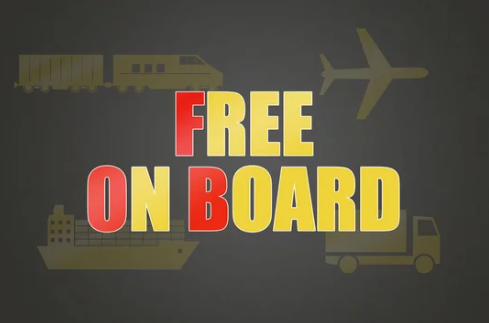What is FOB (Free On Board)?
Posted on: 24/10/2024

Here’s a detailed breakdown of FOB (Free On Board):
1. Seller’s Responsibilities
Under FOB, the seller has several key obligations:
Delivering the Goods to the Port and Loading Them onto the Vessel: The seller must transport the goods to the designated port of shipment and ensure they are loaded onto the ship nominated by the buyer. All costs and risks up to the point when the goods are safely on board are the responsibility of the seller.
Customs Clearance for Export: The seller must handle all export customs clearance procedures, including obtaining licenses, completing export documentation, and paying any export duties.
Bearing the Risk until the Goods Are Loaded onto the Ship: The seller assumes all risks, such as loss or damage to the goods, until the goods have passed over the ship’s rail and are fully loaded.
2. Buyer’s Responsibilities
Once the goods are on board the ship, the buyer takes over the remaining responsibilities:
Arranging and Paying for Maritime Transportation: The buyer arranges and pays for the shipping of the goods from the port of shipment to the final destination. This includes negotiating freight costs and managing logistics for the transport.
Risk after the Goods Are Loaded onto the Ship: As soon as the goods are loaded onto the ship, the buyer bears all risks, including damage or loss during transit.
Insurance and Import Customs: The buyer is responsible for insuring the goods during transit and for handling all customs clearance, duties, and taxes at the port of destination.
3. Delivery and Transfer of Risk
a. Delivery When the Goods Are Loaded onto the Ship
Delivery is considered complete when the goods have been loaded onto the vessel. This is the key point in FOB, as the seller’s obligations end and the buyer’s responsibilities begin once the goods cross the ship’s rail.
b. Transfer of Risk
The risk transfers from the seller to the buyer as soon as the goods are loaded onto the ship. From this point on, the buyer assumes all risks, including damage or loss of the goods during maritime transport.
4. Comparison with Other Incoterms
FOB vs. FAS (Free Alongside Ship):
In FAS, the seller’s responsibility ends when the goods are placed alongside the vessel, and the buyer is responsible for loading them onto the ship. In FOB, the seller is responsible for loading the goods onto the ship.
FOB vs. CIF (Cost, Insurance, and Freight):
Under CIF, the seller takes on additional responsibilities, including paying for freight to the destination port and purchasing insurance. In FOB, the seller’s responsibility ends once the goods are loaded onto the ship, and the buyer must arrange and pay for both freight and insurance.
FOB vs. EXW (Ex Works):
EXW places minimal responsibility on the seller, requiring the buyer to handle the entire shipping process. In contrast, FOB requires the seller to take the goods to the port and load them onto the ship, which simplifies logistics for the buyer.

5. Advantages of FOB
Balanced Responsibilities: FOB provides a balance of responsibilities between the buyer and the seller, as the seller manages the goods until they are on board the vessel, after which the buyer takes control.
Control Over Shipping: Buyers who prefer to choose their own shipping methods and carriers can control the maritime transportation aspect, while still having the seller handle export clearance and loading.
Cost Efficiency: Buyers with expertise in international shipping can benefit from FOB by selecting the most cost-effective shipping options and negotiating freight rates directly with carriers.
6. Real-World Example of FOB
A furniture manufacturer in Indonesia sells products to a retailer in the United States under FOB terms. The Indonesian seller delivers the furniture to the port of Jakarta, handles all export customs, and loads the goods onto a ship designated by the U.S. buyer. Once the furniture is loaded, the buyer takes responsibility for the shipping costs and risks during the sea journey to the U.S., as well as import duties and inland transportation upon arrival.
7. Conclusion
FOB (Free On Board) is a widely used Incoterm for maritime and inland waterway transport, offering a clear division of responsibilities between the buyer and the seller. The seller manages the process up to the point of loading the goods onto the ship, while the buyer assumes responsibility for transportation, insurance, and risks after the goods are on board. This term is ideal for buyers who prefer to control their shipping process but still want the seller to handle export formalities and loading the goods onto the vessel.